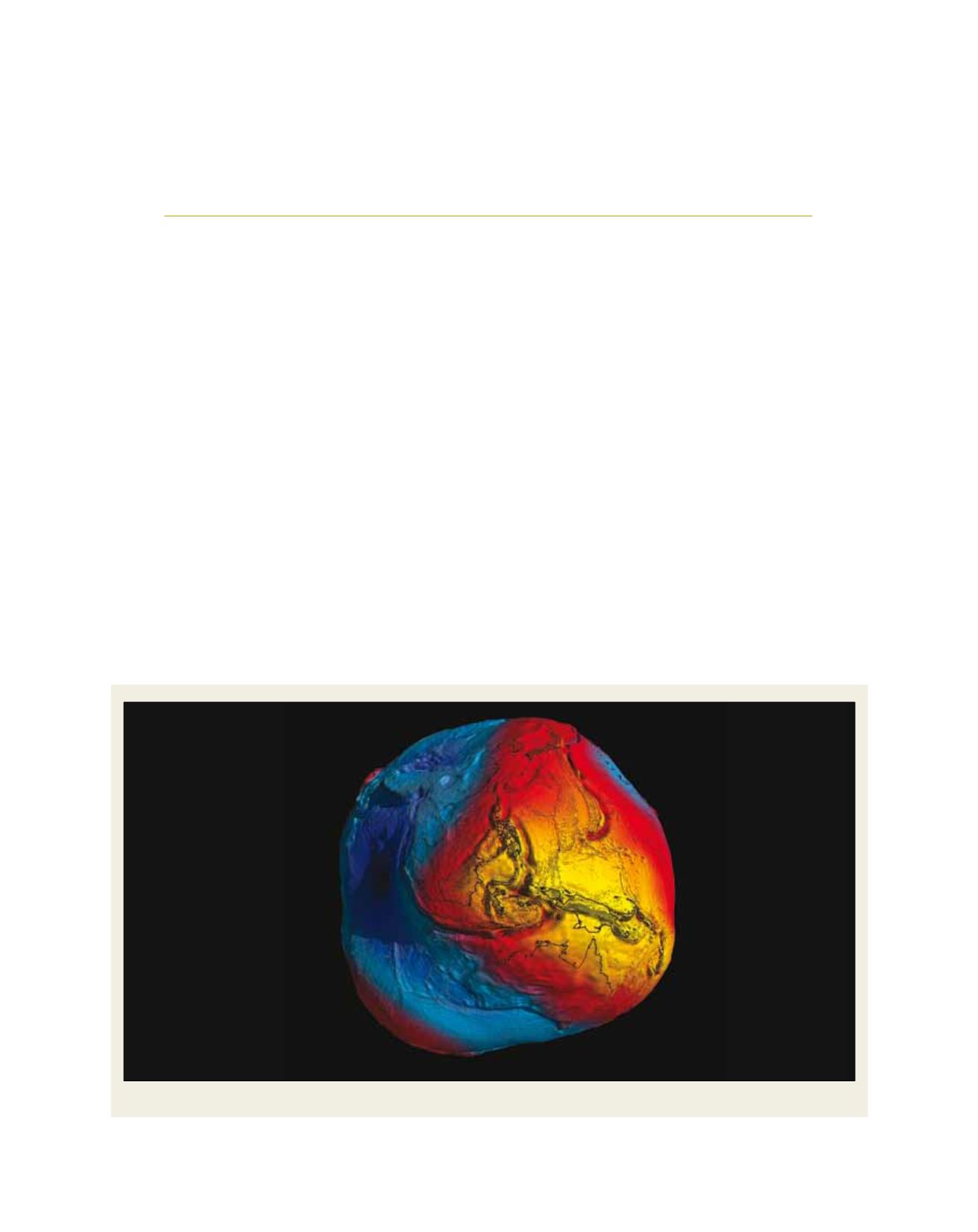

[
] 203
Understanding climatic processes on Earth:
the invaluable contribution of satellites
Volker Liebig, Director Earth Observation, European Space Agency
E
arth is a complex planet: the only one known today that
carries life – in abundance and for billions of years.
Powered by the interplay of its spherical, hot inner struc-
ture and energy received from outside, particularly from the
sun, various spheres of the planet make up the environment we
live in: atmosphere, oceans, land and cryosphere.
Climatic change processes have accompanied most of Earth’s exist-
ence. Today, however, these changes take place at – so far as can be
said from scientific sources – unprecedented speed. Human actions
could be a direct cause of some accelerated climatic phenomena,
like an unusually strong warming of the Arctic or an increase in
frequency of extreme weather events around the globe.
With eight billion humans on the planet, the question of efficient
mitigation of negative climatic consequences, and of a more sustain-
able way of acting, has become imperative. But both the assessment
of the current situation and the planning of the future necessitate
a sound scientific collection of Earth-related data, as well as their
careful interpretation to become the basis of societal
consequences.
Just as the cartographers of earlier centuries climbed
mountains to have a better overview over their
surroundings, satellites in space get a better picture of
our planet at large. It is not only photographs of the
Earth’s surface that scientists are looking for; much
more can be achieved through more sophisticated satel-
lite applications. The fleet of those sentinels in space
helps us to better understand global processes that
shape our environment and also our future.
Nothing within the Earth’s systems is an isolated
event. When it comes to mapping and understanding
climate change processes complex questions arise, also
impacting political and scientific debate. The impact of
observed or forecasted variations of our environment is
far-reaching. It is imperative to provide a basis to put
factual evidence, scientific models, social debate and
E
cosystems
The most accurate geoid delivered by the GOCE mission
Source: ESA 2012
















